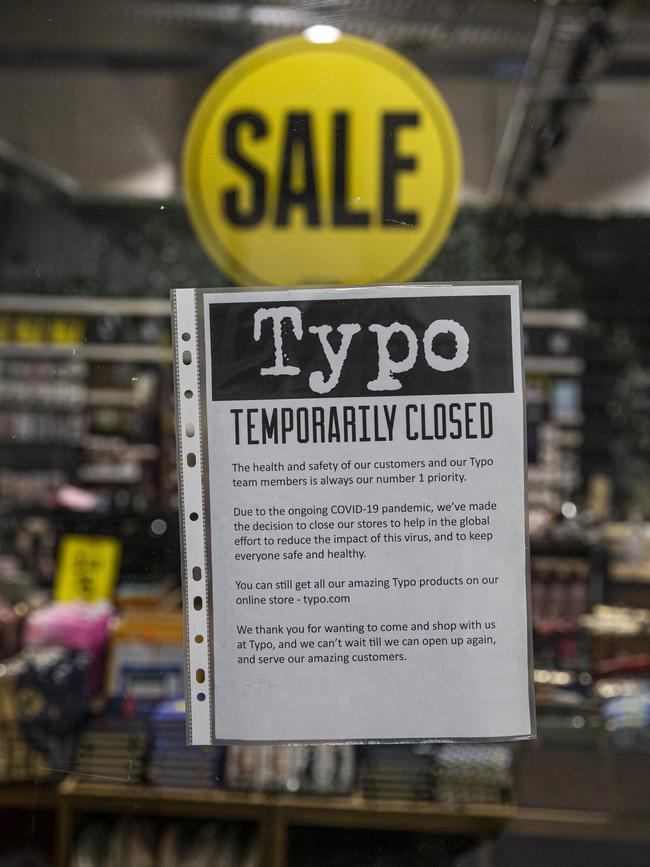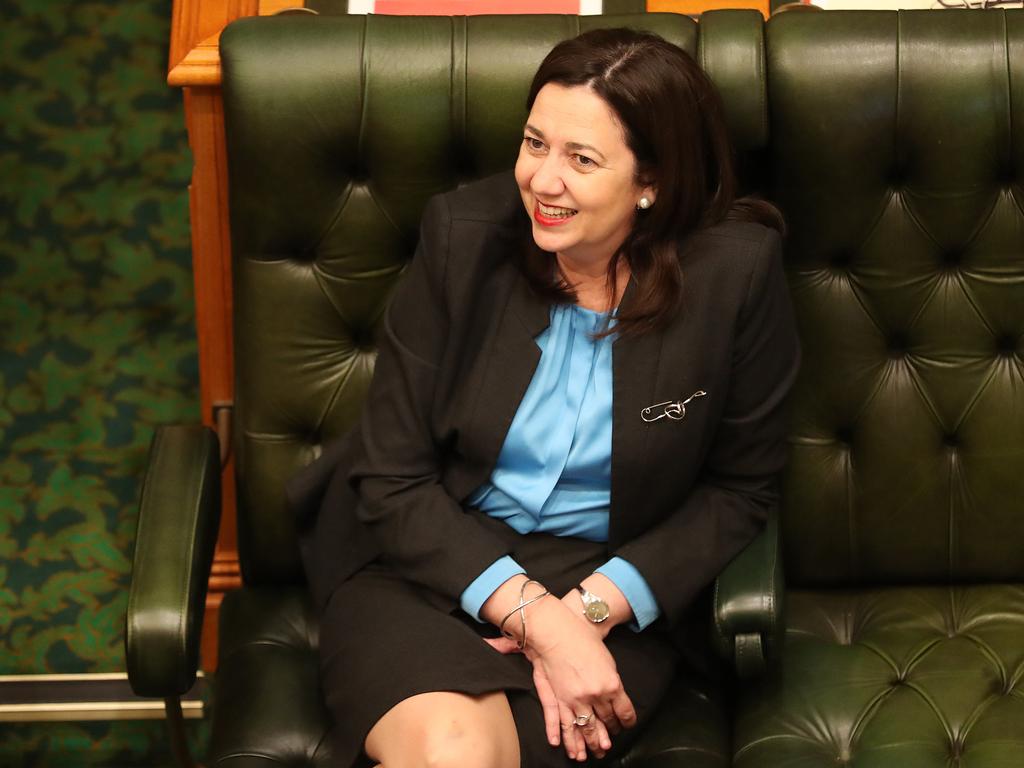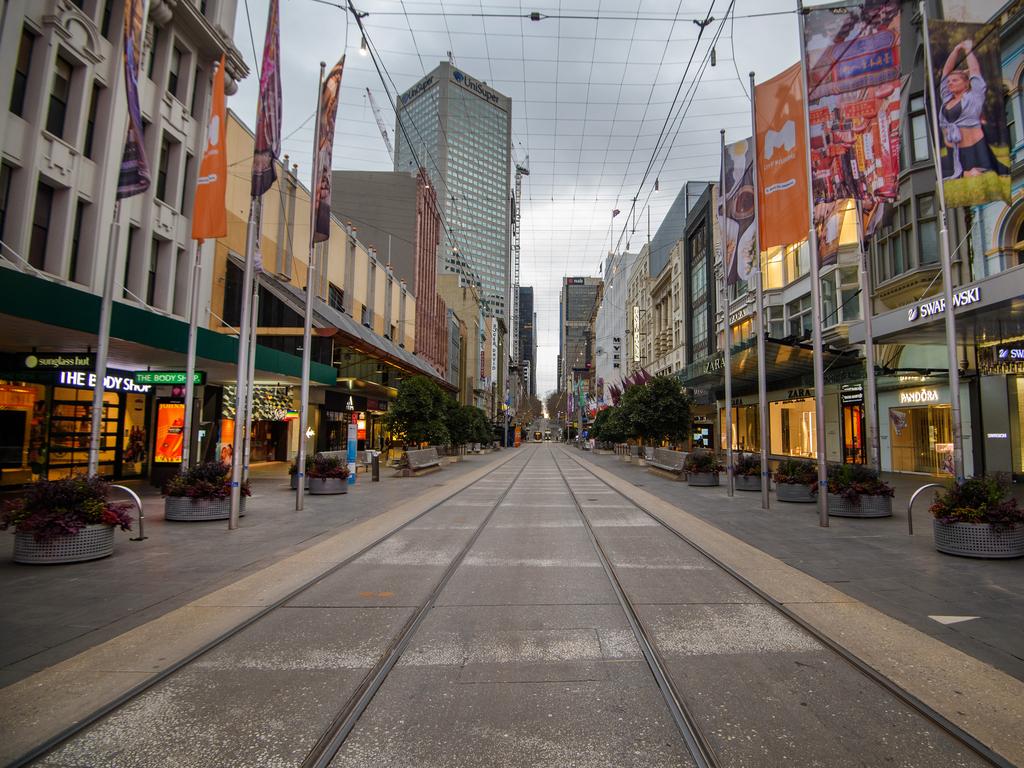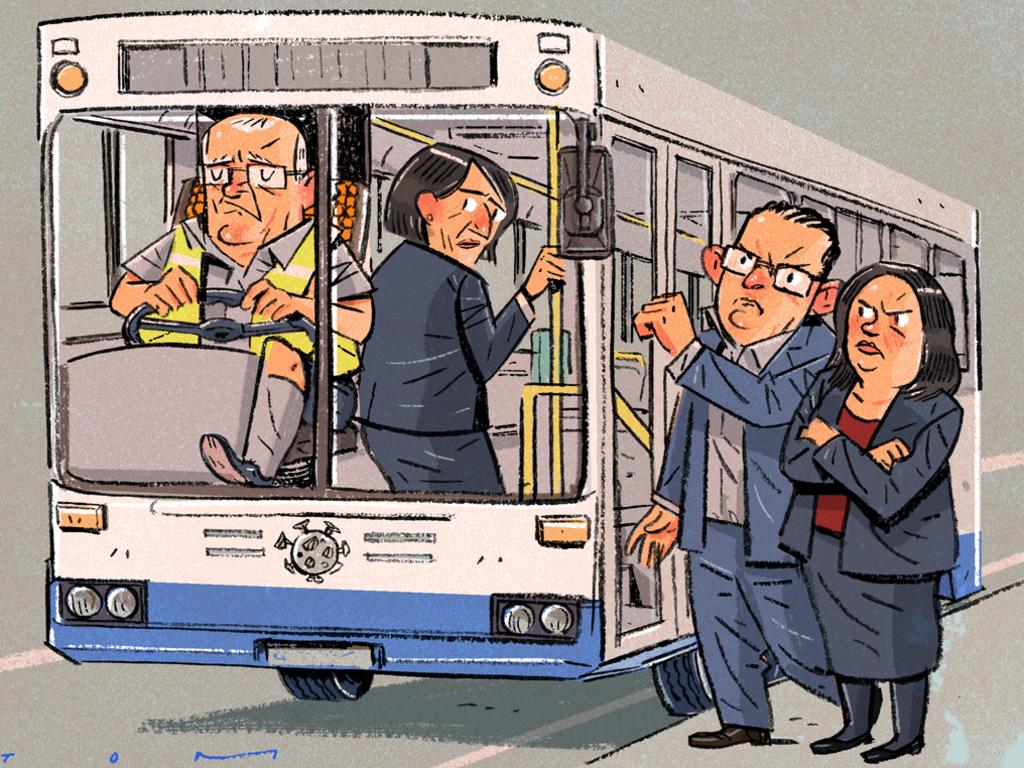Brave new budget first hint of how we fix grave new world
Covid-driven recession will recast Australia’s economy, offering opportunities for vital reform.

Deep recessions are not simply reboots of the economy’s operating system; they change the country and leave scars. Amid the pandemic there’s a new political economy around the role of government, how demand and debt are managed, how best to generate wealth, and who deserves a leg-up.
The centre of politics is being redefined in the quest for national reconstruction, which will be the theme of the October 6 budget. In a few weeks we’ll see how far Scott Morrison and Josh Frydenberg are prepared to stray from Liberal policy orthodoxy to create jobs.
Australia won’t be snapping back to pre-crisis form. High unemployment will be with us for years; jobs have been destroyed, as firms shift shape, cut fat and leave a trail of wreckage and debts that won’t be settled. On one US estimate, 42 per cent of jobs lost due to COVID-19 are gone for good.
The Treasurer is finessing the budget’s finer points but is attuned to the big picture of forces unleashed by the recession. “One of the consequences of the crisis has been more people forced to work from home as opposed to their city office,” he tells Inquirer. “This will accelerate a technology-driven trend that was already under way, which will create more flexible workplaces, but also open more opportunities for our regions … you will see also more onshoring around the world as companies seek to reduce risk out of their supply chains. It seems like aviation will be doing it tough for a while yet. With elevated unemployment … governments will be focused on the crucial task of getting people into work.”
The 1980s and 90s show severe downturns remake the nation in expected and unexpected ways; they hurry things up at work and home, forcing businesses to innovate and workers to switch jobs or industries, and move to prosperous regions. All this improves the dynamism of our economy, while imposing strains on the social fabric, and chronic misery.
This isn’t your usual bust, as spending is strangled by state government decree and a viral foe shreds confidence and foments uncertainty. We are in an activity abyss. The number of hours worked has plummeted 10 per cent but incomes have not fallen as far, due to direct government support of $52bn in the June quarter alone. Frydenberg has flicked the switch to Deficitville. But for how long?

Next year we may graduate to a “typical recession” when federal assistance is withdrawn, says ANU emeritus professor Bob Gregory. “The government has to claw back the stimulus, but they can’t go over the top,” he tells Inquirer. Gregory, who was on the Reserve Bank board from 1985 to 1995, believes the prime movers of our recent growth are in peril. Not the factors behind the “level” of our gross domestic product per se, but the drivers of the “additional” growth we’ve enjoyed since 2004.
China and immigration are responsible for that extra GDP. China is shorthand for mining production, a jump in our terms of trade, and the big bump in services exports, such as tourism and education. Those are also linked, in part, to a boost in immigration, which is the main component of robust population growth. Due to the pandemic and policy decisions, which will cause an 85 per cent drop in net overseas migration this financial year, those growth drivers are out of the play.
“We’re also seeing an enormous growth in deficits and debt,” says Gregory. “Suddenly these things don’t matter as much as they did in the previous decade. To date, both parties have been incredibly sensible about deficits and debt. Whether that holds is uncertain. The major way to cut deficits has been to raise taxes through bracket creep, but that’s not going to help when there’s no inflation in the economy.”
While Canberra’s $314bn in financial support is saving jobs, it is delaying capitalism’s creative destruction, the reallocation of capital and labour necessary to raise living standards. When JobKeeper runs out, the bond between many employers and employees will be severed and there will be a feverish period of industrial rebirth, job switching and retraining.
Qantas and Virgin have cut around 10,000 workers, including pilots, flight attendants and ground crew, due to border closures and a slump in business travel. Australian and International Pilots Association president Mark Sedgwick says around 15 per cent of stood-down pilots had found other jobs; as labourers, in call centres or stacking supermarket shelves. For pilots, maintaining “recency” and “currency” of flying skills will be difficult as the crisis drags on. Sedgwick calls on the government to introduce a targeted “PilotKeeper” program.
A survey of AIPA members found only 37 per cent now in alternative employment were keen to return to aviation. It could be years until the industry recovers to pre-pandemic levels. “Businesses should look beyond a pilot’s resume and see … a person who’s had years and years of experience doing analytical and cue-based risk assessments,” says Sedgwick, a Qantas pilot and former air force flyer. “In this time of risk, those high-level decision-making skills translate to any industry”.
The economy was in transition before the crisis, producing fewer goods and more services, particularly by firms other businesses rely on to function, and exports. Supply chains are getting longer, more complicated. But will that push upstream be reversed as the cause of sovereignty takes root in a new push to be less dependent on China? The budget will aim to revive local, high-end and strategic manufacturing.

The past gives us only a partial view of the coming realignments. The 90s recession was made in Martin Place, home of the Reserve Bank, to cool an overheating economy that manifested in a current account blowout. A debt-fuelled boom, with borrowers chasing wildly inflated asset prices, was the precursor to ruin. The RBA pushed interest rates to 18 per cent, a monetary sledgehammer to kill off the exuberance and excesses.
On the plus side, inflation was crunched out of the system, as businesses lost pricing power, a higher dollar delivered cheaper imports and new bargaining arrangements kept a lid on wages. The decade that followed was prosperous. We had the second-highest GDP growth in the OECD, dodged the Asian financial crisis and missed the “dotcom” wreck. Productivity surged, for a time. The term “miracle economy” crept into discussions about our fortunes. That crazy turn in the business cycle came as the economy was being refashioned by Labor’s signature reforms, such as financial deregulation, floating the dollar and slashing industry protection, that opened us to global competition, The recession was a double-whammy for manufacturing and older male workers, many banished to long-term unemployment or early retirement. It was a king-hit to rust-belt states Victoria and South Australia, where mismanagement felled state banks and other institutions.
Our job-creating machine spluttered. As Gregory has observed, the rate of full-time employment growth in the 90s was the second-worst decade since WWII. The growth in welfare recipients, as a proportion of the population increase, was the largest in any decade in that period. As well, most of the benefits of higher productivity were going to those at the top of the earnings tree, making income inequality worse. In politics, John Howard and Keating, then Kim Beazley, battled over the “battlers”, who stuck to the Coalition for four terms.
Frydenberg is framing a budget amid ever-shifting forecasts and a volatile virus. Uncertainty could hold the nation back, as consumers save at record levels and companies sit on expansion plans. “The extent of any longer-lasting effects from the pandemic is also uncertain, including as a result of persistently high unemployment, business failures or broader changes in the structure of the economy both domestically and globally,” Treasury said in its July Economic and Fiscal Update. “This economic scarring may suppress the pace of recovery.”
Economies are being rewired. According to a June research paper about shifts caused by the pandemic, published by America’s Brookings Institution, much of the change in spending patterns, such as to online and shopping close to home, and altered business practices, including less travel and more work from home, will persist. In this “reallocation shock”, the economists predict the rate of US job reordering across firms will more than double from the pre-pandemic average and the rate of sales reallocation will quadruple.
In Australia, heavily indebted households are spending more carefully and differently, altering fundamentals of retail, a major employer of women and young people. Retailers believe the pandemic has accelerated, perhaps by a decade, a shift to online sales. Even older shoppers appear at ease with shopping from phones, tablets or laptops. The Australian Bureau of Statistics reported online sales in July were 72.5 per cent above their level a year earlier. One in 10 dollars spent in retail is through digital platforms. Online shopping accounts for 5 per cent of food sales, but a hefty 15 per cent of non-food purchases.

Grooming appliance retailer Shaver Shop doubled online sales in the year to June. Chief financial officer Larry Hamson says COVID has created needs and accelerated two key shifts: “First, the transition to DIY in personal care and beauty, aided by ongoing product innovation; and second, the propensity to online sales.” Despite closing 26 stores in Melbourne last month, when Daniel Andrews introduced stage-four restrictions, it filled online orders from all but four locations. Shaver Shop sales in the Shutdown State fell by only 16 per cent in August, compared to a year earlier.
So-called “footfall” in shopping precincts had been in decline for years, putting pressure on overheads, especially rents. Retailers have muscled up, most spectacularly the Solomon Lew-chaired Premier Investments, our largest retail tenant, with brands such as Just Jeans, Portmans, Peter Alexander and Smiggle. Premier refused to pay rent in the initial six-week shutdown and is pushing for tenancies based on a percentage of sales.
In a June report, KPMG found the crisis has “simply accelerated and amplified cracks … already visible”, especially in bricks-and-mortar retailing. It has triggered a rebirth in village shopping, changed the weekly pattern of shopping and confronted retailers and landlords with a “prisoners’ dilemma”, as neither side has a perfect hedge to protect profits. “Even if COVID-19 is quickly resolved, retailers and landlords will need to ‘lean in’ to create a new and more sustainable retail business model, which in turn will require adaptations to the property model,” the KPMG researchers said.
Working from home has been a bold experiment, born of necessity, in rearranging projects and the service industry. According to Bernard Salt, for the past four censuses the proportion of the workforce who said they worked from home has been 4 or 5 per cent. That was despite the digital revolution in kit and internet pipes, such as the National Broadband Network. At next year’s census, the demographer claims it will be 10 per cent.
Two-thirds of federal public servants are working remotely. As we reported last month, their masters are worried about the sustainability of pyjama policymaking, rising cost to taxpayers of vacant office space, a slide in productivity from staff missing in action, lack of mentoring for disengaged junior officials and potential for sub-par advice in the hermit land of Zoom.
Productivity is the economists’ nirvana. Yet by the end of the 90s, some argued our productivity miracle was an illusion caused by unmeasured intensification of work and extension of working hours. Now, University of Queensland economist John Quiggin sees the seeds of a revolution in remote working. “We might have stumbled upon a massive opportunity for microeconomic reform, yielding benefits far greater than those of the hard-fought changes of the late 20th century,” he argued in The Conversation last week.
If working from home eliminated an hour of commuting, without changing time spent on work or reducing production, the result would be equivalent to a 13 per cent increase in productivity (assuming a 38-hour working work). If half the workforce achieved such a gain, Quiggin says, it would be equivalent to a 6.5 per cent increase in productivity.
Working from home will cut costs for employers and allow more flexibility in hiring, opening up “tree changes” to the regions. “If the productivity gains … through remote work are to be shared by the entire community, substantial government action will be needed to make sure it happens,” he concludes, calling for an expansion of publicly funded jobs in services, such as aged care, and a reversal of trends towards casual and contract employment.
Vast labour market shifts, driven by technology, demographics, workplace policy and behavioural change, are also coming. Employers in tourism, higher education and retail are re-engineering operations. Financial services and consulting firms will expand digital footprints, causing a drop in demand for office space and services that sustain knowledge workers, such as cafes, laundry and cleaning. Governments can manage these shifts by ensuring workers have the right skills and there are no major barriers to hiring. The Prime Minister’s skills policy is in this vein. But getting displaced workers into jobs will require granular detail on vacancies and intricate case management.
There are likely to be significant regional differences in recovery. Victoria’s second wave of infections and elongated path to withdrawing restrictions will leave a long tail of economic pain. The state was leading the nation in population and economic growth, but confidence is shot and a devastating job crunch is coming when JobKeeper tapers off next year.
Export-oriented WA, where iron ore demand skews its fortunes, came into the crisis an underperformer. Unemployment at 8.3 per cent is relatively high considering Premier Mark McGowan boasts of WA as the “engine room of the national economy”. Mining makes up 36 per cent of gross state product and China has given sandgropers a pay rise. The Commonwealth Grants Commission duly cut its latest allocation of funds.
Raising productivity growth via reforms, including tax breaks, more flexible workplace laws and less red tape, is necessary. The government will take steps in this direction. Will it be sufficient to remodel the engine? In the 90s, it took seven years for living standards and employment to recover. Getting the “macro” settings spot-on is just as important as “micro” tweaks. Morrison is aiming for above-trend growth of 3.75 per cent a year for five years. Few think that’s attainable, even with near-zero interest rates and the green light from the RBA for Frydenberg to hit the accelerator on spending.






To join the conversation, please log in. Don't have an account? Register
Join the conversation, you are commenting as Logout